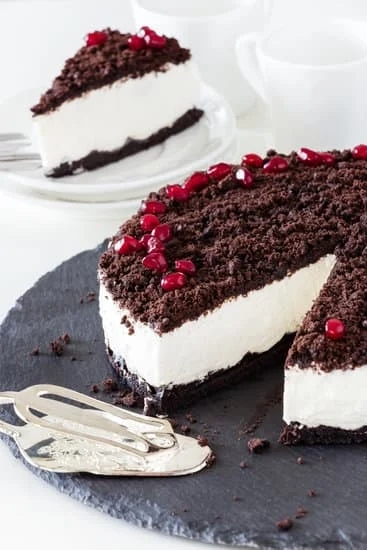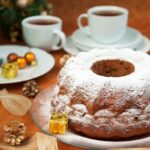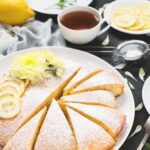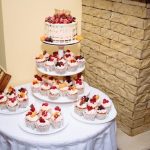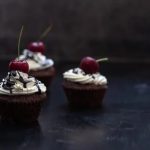Are you looking to take your cake decorating skills to the next level? Learn how to use an airbrush for cake decorating and elevate your creations with stunning designs and intricate details. Using an airbrush allows you to achieve a professional finish and create unique effects that are sure to impress your friends and family.
When it comes to using an airbrush for cake decorating, it is important to understand the basics before diving in. From selecting the right equipment to mastering different techniques, there are key components to consider to ensure successful results. Whether you are a beginner or have some experience with cake decorating, incorporating an airbrush into your toolkit can open up a world of creative possibilities.
In this article, we will walk you through everything you need to know about using an airbrush for cake decorating. We will discuss the different types of airbrushes available, essential equipment needed, setting up the airbrush properly, choosing the right colors, various techniques for airbrushing, cleaning and maintenance tips, troubleshooting common issues, and providing inspiration and ideas for your next cake project. Let’s explore the exciting world of airbrushing and unlock your creative potential in cake decorating.
Types of Airbrushes
When it comes to choosing the right airbrush for cake decorating, there are several types to consider, each with its own set of pros and cons. Understanding the differences between them can help you make an informed decision on which one will work best for your needs. Here is a breakdown of the different types of airbrushes available for cake decorating:
- Single action airbrush: This type of airbrush is simpler to use as it only requires pushing down on the trigger for both airflow and paint release. It is great for beginners and those looking for a more straightforward application process.
- Double action airbrush: With a double action airbrush, you have more control over the amount of paint being released, as pressing down on the trigger controls airflow while pulling back controls paint flow. This type allows for more precision and detailed work.
- Gravity feed airbrush: In a gravity feed airbrush, the paint cup is located at the top of the airbrush, allowing gravity to pull the paint into the mixing chamber. This type is ideal for small details and intricate designs due to its fine spray pattern.
- Siphon feed airbrush: A siphon feed airbrush has the paint cup located below the nozzle, relying on airflow to draw paint up from the cup into the mixing chamber. It is suitable for covering larger areas quickly but may require more cleaning between color changes.
Each type of airbrush has its own advantages and drawbacks, so consider your specific cake decorating needs before making a decision on which one to invest in. Some decorators may even opt to have multiple types of airbrushes on hand for different purposes or projects. Now that you have an understanding of the different types available, let’s delve into how to properly set up your chosen airbrush for cake decorating.
- Place your chosen color of food-safe liquid or gel dye into the reservoir of your chosen sprayer system.
- Make sure that you have tested your sprayer system – Although most manufacturers vacuum-test their systems prior to sale, there may still be leaks around one way valves which would cause misfiring and inefficiency
- Peek at additional additions like thinners which can improve fluidity without reducing pigment content as this diluting factor might not leave bright colors behind
Equipment Needed
When it comes to using an airbrush for cake decorating, having the right equipment is essential to achieve professional-looking results. Here is a list of the necessary equipment needed to get started:
- Airbrush: The most important tool for airbrushing cakes is, of course, the airbrush itself. There are gravity feed, siphon feed, and side feed airbrushes available, each with its own advantages.
- Air Compressor: An air compressor is required to power the airbrush. Make sure to choose one with adjustable pressure settings to have better control over your spray.
- Air Hose: You will need an air hose to connect the air compressor to the airbrush. Opt for a flexible and durable hose for ease of use.
- Food-Safe Airbrush Colors: It’s crucial to use food-safe colors specifically designed for airbrushing cakes. These colors are edible and safe for consumption.
- Cleaning Tools: Keeping your airbrush clean is vital for its performance and longevity. Invest in cleaning brushes, thinners, and cleaning pots.
Additionally, stencils can be a helpful accessory when using an airbrush for cake decorating. Stencils come in various designs and patterns that can add intricate details to your cakes with ease. Having a good selection of stencils can expand your creativity and make your cake decorating process more efficient.
By ensuring you have all the necessary equipment mentioned above, you’ll be well on your way to mastering how to use an airbrush for cake decorating and creating stunning designs on your baked creations.
Setting Up the Airbrush
When it comes to using an airbrush for cake decorating, properly setting up the airbrush is crucial to ensure smooth and successful results. Here is a step-by-step guide on how to correctly set up your airbrush for decorating cakes:
Assemble the Airbrush
The first step in setting up your airbrush is assembling all the components. Make sure that the nozzle, needle, needle cap, and airbrush body are all securely attached. It’s essential to follow the manufacturer’s instructions for proper assembly to avoid any issues during the decorating process.
Connect Air Compressor
Next, you will need to connect your airbrush to an air compressor. Ensure that the compressor is clean and free of any debris that could clog the airbrush. Adjust the air pressure according to the type of design you want to achieve on your cake. Lower pressure settings are usually recommended for delicate work like shading or fine details.
Fill Your Airbrush With Color
Before filling your airbrush with color, make sure to use food-safe and edible colors specifically designed for airbrushing cakes. Fill the cup of your airbrush with a small amount of color at a time, as you can always add more later if needed. Start with lighter colors before moving on to darker shades.
By following these steps on how to set up your airbrush properly for cake decorating, you’ll be well on your way to creating beautiful and professional-looking designs on your cakes. Remember, practice makes perfect when it comes to mastering the art of using an airbrush for cake decoration.
Choosing the Right Colors
When it comes to cake decorating with an airbrush, choosing the right colors is crucial in achieving stunning and visually appealing results. Whether you’re adding a pop of color to a simple design or creating intricate designs on your cakes, selecting the appropriate shades is key. Here are some tips on how to choose the right colors and food-safe airbrush colors for decorating cakes.
Consider the Theme
One important factor to consider when selecting colors for cake decorating is the theme of the occasion. For example, if you’re decorating a birthday cake for a child, you may opt for bright and vibrant colors like blues, pinks, and yellows.
On the other hand, for a more elegant event like a wedding or anniversary, softer hues like pastels or metallics may be more appropriate. Keeping the theme in mind will help you narrow down your color choices and create a cohesive look for your cake.
Food-Safe Colors
It’s essential to use food-safe airbrush colors when decorating cakes to ensure that your creations are safe for consumption. Always opt for edible airbrush colors that are specifically formulated for use on food items.
These colors are made with non-toxic ingredients and are designed to adhere well to cake surfaces without compromising taste or safety. Avoid using regular non-edible paints or inks in your airbrush as they may contain harmful chemicals that can be harmful if ingested.
Experiment and Mix Colors
Don’t be afraid to experiment with different color combinations when decorating cakes with an airbrush. Mixing colors can help you achieve unique shades and gradients that can take your cake designs to the next level. Consider blending two or more colors together using the airbrush to create ombre effects or custom hues.
Remember that practice makes perfect, so don’t hesitate to test out different color mixes on a spare piece of fondant or paper before applying them to your actual cake. By getting creative with your color choices, you can truly elevate your cake decorating skills using an airbrush.
Techniques for Airbrushing
Airbrushing can elevate your cake decorating skills to the next level, allowing you to create beautiful and intricate designs with ease. Understanding various techniques for using an airbrush is essential in achieving professional-looking results on your cakes. One of the key techniques in airbrushing is shading, which involves creating depth and dimension by layering different hues of color.
To achieve a smooth gradient effect when shading with an airbrush, start by holding the airbrush closer to the cake surface for darker shades and gradually move further away for lighter shades. This technique requires practice and precision but can significantly enhance the overall look of your cake designs.
Another popular technique when using an airbrush for cake decorating is stenciling. Stencils are templates with predefined designs or patterns that you can use to add intricate details to your cakes through airbrushing. To use stencils effectively, ensure that the stencil is placed securely on the cake surface and apply a steady and even spray of color with the airbrush.
Lift the stencil carefully to reveal the design without smudging or smearing the colors. Experimenting with different stencil designs and color combinations can help you create unique and visually stunning decorations on your cakes.
In addition to shading and stenciling, there are various other advanced techniques that you can explore when using an airbrush for cake decorating, such as freehand painting, texturing, and masking. Each technique offers a different way to express your creativity and customize your cake designs according to your preferences.
By mastering these techniques and practicing regularly, you can develop a wide range of skills in airbrushing that will enable you to bring any cake idea to life with precision and artistry. Whether you’re a beginner or experienced cake decorator, learning how to use an airbrush effectively can open up endless possibilities for creating beautiful and memorable cakes for any occasion.
Cleaning and Maintenance
Cleaning and maintaining your airbrush is crucial to ensure its optimal performance and longevity. Neglecting proper care can lead to clogging, inconsistent spray patterns, and overall poor results in cake decorating. By following a regular maintenance routine, you can prolong the lifespan of your airbrush and achieve beautiful results every time you use it.
One important aspect of cleaning your airbrush is to ensure that it is thoroughly cleaned after each use. This includes disassembling the airbrush according to the manufacturer’s instructions and cleaning all components with warm water and a gentle cleaner. Additionally, using an airbrush cleaning solution specifically designed for food-safe tools can help remove any stubborn residue left behind by colored icing or food coloring.
Regular maintenance also involves checking for any signs of wear and tear on the parts of the airbrush. Make sure to inspect the needle, nozzle, and trigger regularly for any damage or build-up that may affect the performance of the airbrush. It’s important to replace any worn-out parts promptly to avoid issues during cake decorating projects.
Moreover, storing your airbrush properly when not in use is essential for its longevity. Keep it in a clean and dry environment to prevent dust or other particles from clogging the nozzle or trigger mechanism. Some decorators also recommend using a protective case or cover for your airbrush to shield it from potential damage when not in use.
| Importance of Cleaning | Maintenance Tips |
|---|---|
| Regular cleaning prevents clogging and inconsistent spray patterns | Check for wear and tear regularly |
| Use food-safe cleaning solutions | Proper storage in a clean, dry environment |
Troubleshooting
One common issue that cake decorators may encounter when using an airbrush for cake decorating is clogging. This can happen when the airbrush is not properly cleaned after each use or if the nozzle becomes blocked with dried color.
To prevent clogging, it is essential to thoroughly clean the airbrush with warm water and cleaning solution, ensuring all residue is removed. Additionally, it’s recommended to run a bit of cleaner through the airbrush before switching colors to avoid any potential clogs.
Another challenge that decorators may face is inconsistent spray patterns while using an airbrush. This can result in uneven coverage or splotchy designs on the cake. One possible cause of this issue could be a low air pressure setting on the compressor or a congested nozzle. To fix this problem, adjust the air pressure to the correct level for your desired effect and check that the nozzle is clean and free from any obstructions.
In some cases, airbrush users may find that their colors are not appearing as vibrant as they would like on the cake. This could be due to dilution of the colors with too much water or not using high-quality food-safe airbrush colors. It’s important to follow instructions on color mixing ratios provided by manufacturers and invest in good quality food coloring specifically designed for airbrushing purposes to achieve vibrant and lasting results.
| Common Airbrush Problem | Solution |
|---|---|
| Clogging | Clean thoroughly after each use and run cleaner through before changing colors. |
| Inconsistent Spray Patterns | Adjust air pressure settings and ensure nozzle is clean. |
| Dull Colors | Use high-quality food-safe airbrush colors and follow mixing ratios provided. |
Inspiration and Ideas
In conclusion, learning how to use an airbrush for cake decorating opens up a world of creative possibilities for both professional bakers and enthusiasts. By understanding the basics, investing in the right equipment, and mastering various techniques, anyone can elevate their cake decorating game to new levels. From choosing the right colors to exploring different shading and stenciling techniques, the use of an airbrush adds a unique touch to any cake design.
Moreover, showcasing creative examples of cakes decorated using an airbrush serves as inspiration for those looking to experiment and try out new designs on their own cakes. Whether it’s creating intricate patterns, blending colors seamlessly, or adding depth through shading, the versatility of an airbrush allows for endless creativity. With practice and patience, anyone can achieve stunning results that are sure to impress friends, family, or clients.
Lastly, keeping your airbrush clean and well-maintained is crucial for its performance and longevity. Regular cleaning prevents clogging and ensures a consistent spray pattern every time you use it. By troubleshooting common issues that may arise while using an airbrush for cake decorating, you can overcome challenges with ease and continue creating beautiful designs. So don’t be afraid to dive into the world of airbrushing for cake decorating – with dedication and passion, the possibilities are endless.
Frequently Asked Questions
Can I Use Regular Food Coloring in My Airbrush?
Regular food coloring is not recommended for use in an airbrush. The consistency of food coloring designed for airbrushing is different from regular food coloring, which can clog the airbrush and affect the spraying process.
Can You Airbrush on Buttercream Frosting?
Airbrushing on buttercream frosting is definitely possible and can result in beautiful and professional-looking designs on cakes. It is important to make sure the buttercream is smooth and chilled before airbrushing to achieve the best results.
How Do You Stencil a Cake With an Airbrush?
Stenciling a cake with an airbrush involves securing the stencil to the surface of the cake using edible adhesive or pins, then using the airbrush to spray color over the stencil onto your cake. Careful and steady hands are essential for a clean design.

Welcome to our cake decorating blog! My name is Destiny Flores, and I am the proud owner of a cake decorating business named Cake Karma. Our mission is to provide delicious, beautiful cakes for all occasions. We specialize in creating custom cakes that are tailored specifically to each customer’s individual needs and tastes.

